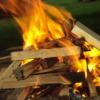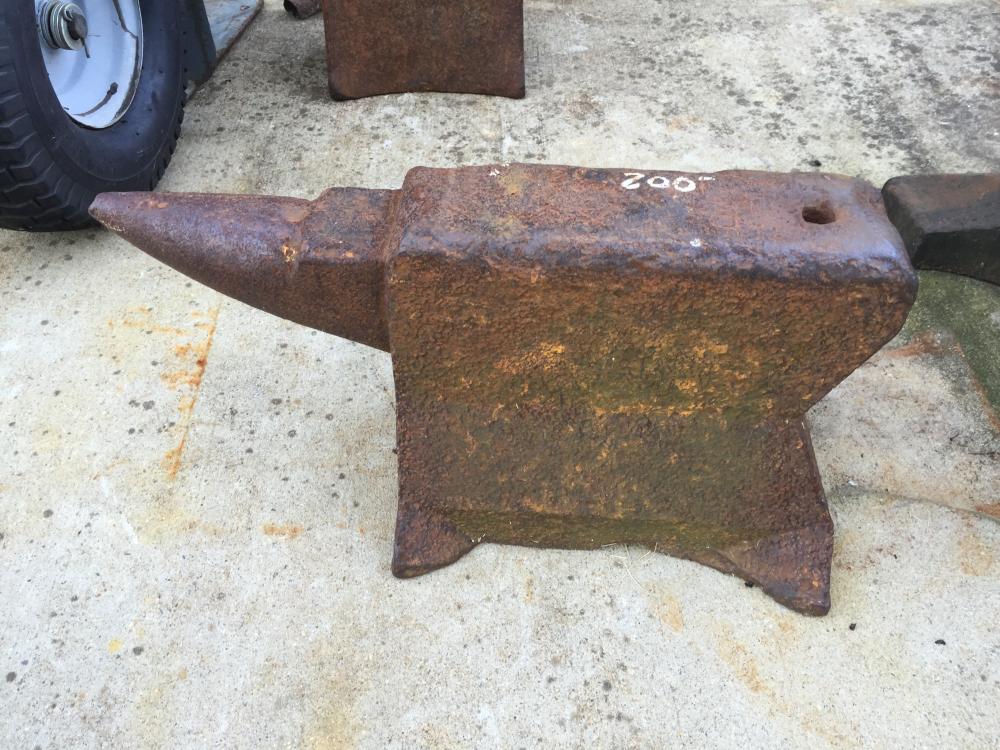-
Posts
859 -
Joined
-
Last visited
Content Type
Profiles
Forums
Articles
Gallery
Downloads
Events
Everything posted by Ridgewayforge
-

Putting out coal forge fire questions
Ridgewayforge replied to remist17's topic in Solid Fuel Forges
I rake the livliest coals out onto the forge table. I use a Champion Whirlwind Cast Iron Firepot, so I don't want it ruined. It wastes a little bit of coal becuase it still burns down, but its maybe 1/2lbs if that that turns into ash. Granted, my coal doesn't have an issue with clinkers, so I don't need to fish them out from the bottom. -

forge welding, and quenching
Ridgewayforge replied to Tempered Warrior's topic in Blacksmithing, General Discussion
There is a simple solution to this broad question: do your research, and by this I mean that you should look at the stickies on this site, then you should read posts, using the search engine to narrow your search down to reasonable elements. Your question is a little broad. Narrow it with reading of books and old posts on this website, then ask specific questions if you find that they have not been adaquately explained for you. -

ID my anvil!
Ridgewayforge replied to Thief_Of_Navarre's topic in Anvils, Swage Blocks, and Mandrels
No pritchel hole means early 1800s- That is in beautiful condition! Sharp edges, flat face- use her well! -

Should I buy this?
Ridgewayforge replied to Austin Ferraiuolo's topic in Anvils, Swage Blocks, and Mandrels
Yes. That is a steal, at least where I am. -

Bending tool made from an old rotor
Ridgewayforge replied to Xaiver's topic in Tools, general discussion
What about making the holes variable in order to use different pins to get compound curves? also, how did you mount it? -
I would suggest you read up on metal fume fever- even if the galvanized bucket doesn't burn right off, some of the zinc coating may flake into the fire. Dangerous and potentially deadly. Otherwise, it is a good design, if a little shallow. But, that can be fixed with chicken wire and clay.
-
Is this anvil really so old? I think that Victoria is a splendid name for her, and henceforth and soforth, she shall be christened Victoria!
-
Hi all, I wanted to share with everyone my shop. Its not glamorous, but it does what it is meant to do for me. I just acquired an anvil, so my major tooling is complete. I have yet to fasten her down, but I wanted to share the whole shop regardless. The sign which hangs over my forge! The shop as a whole, with the scrap pile in the foreground Thanks!
-
Here's my first *real* anvil: A 75 lb no name London Pattern Anvil. It has a ~7/8" hardie hole and a 9/16" pirtchel, drilled later through the cutting plate. The only marking is a faint "X" on the far side horn facing left. She's not perfect, but she's mine. Now for a name.......
-
Here's my first *real* anvil: A 75 lb no name London Pattern Anvil. It has a ~7/8" hardie hole and a 9/16" pirtchel, drilled later through the cutting plate. The only marking is a faint "X" on the far side horn facing left. She's not perfect, but she's mine. Now for a name.......
-
There is nothing, I repeat, nothing wrong with this anvil. The face is in top condition, minus 5% of it covered in pits. But, do you have a good edge and at least a 1/2" spot to forge on? if so, try to get it for $1/lb, using the "defects" as a bargaining chip. As to usability, it is a fine starter anvil. It does not have to be perfect.
-
Anvils are not so much about the "value" of them monetarily, but how useful they are to a person. A top of the line fishing pole is worthless to the man who doesn't fish. Don't try to "repair" this anvil. work on it, and be happy!
- 19 replies
-
- restoration
- grinding
-
(and 7 more)
Tagged with:
-
Just a thought: That leg appears to be threaded. Could this be a wagon tongue vice missing its lower mounting bracket? The proportions look a little different than other post vices. Edit: A quick google search of images of wagon vices seems to suggest that yours is, in fact, a wagon vice, but with a different mounting bracket.
-

Beak Horn Stake Anvil
Ridgewayforge replied to stroupe63's topic in Anvils, Swage Blocks, and Mandrels
It might work, but its got a mighty small 'sweet spot', and so you would be better off saving it for light duty forge work (i.e. small finial work, working on fork tines, nail making, etc.) -
I began using a firepit, wood and a 5 gallon bucket lid for the air supply. Using a shop vac or a hairdryer will be a breeze
-

Old, but potentially good
Ridgewayforge replied to Ridgewayforge's topic in Anvils, Swage Blocks, and Mandrels
I will be taking a look at it soon. I do not know the weight of it yet. Is there any probability that this is pre-1800's? -
Hi, I am looking to buy this anvil, and I have never seen anything like it before. Its not the standard colonial anvil, and truth to be told, it almost looks like some smith back in the old days made it himself. Any ideas as to age?
-
Yes, that's correct, Frosty. I have not tried it yet, but it was rumored to be such!
-
If you don't incise the lines, you get more of a thorny look to the piece, and it looks less like a pineapple.
-

Fire crane pintles
Ridgewayforge replied to Ridgewayforge's topic in Blacksmithing, General Discussion
I am pushing for the client to install the pintles into the mortar joints. Is it better for the mounting pintles to be the male or the female end of the crane? That is where I am stuck. I see that most of them have the crane itself being the male ends and then are inserted into the female pintles, but I am thinking of doing it like an old barn gate, with the crane being the barn door and the pintles being like the old style pintles. Is this even feasable? -
Hello all, I received a request from a friend to forge for him a fireplace crane for his kitchen hearth. I know that I will be using 1"x1/2" hot rolled steel for the upright and the arm, and probable a diagonal support made from 1/2" square. For the pintles, I have done some research, and it looks like most of the fireplace cranes have tennoned tops and bottoms which are inserted into forged holes in an anchor. I was wondering what the feasability is of forging holes in the top and bottom of the crane and then forging some pintles to anchor into the wall, making the whole crane removable. This will be a used crane to hang dutch ovens and other pots over an open fire. Also, is it better to attach the anchor points through the brick itself or through the mortar between the bricks? Thank you, Ridgewayforge
-
A simple solution is to build a table like mine and pack it with clay. See my thread:
-
A simple solution is to build a table like mine and pack it with clay. See my thread:
-

What steel to make the Fork?
Ridgewayforge replied to ssitko87's topic in Blacksmithing, General Discussion
I use mild steel. You just have to care for it the same way you would a cast iron skillet. -
A whole lot better than my first and second tongs. My 3rd are nearly that good. My only critique is to wire brush frequently, and the bits look a tad thin. What stock did you start with?

